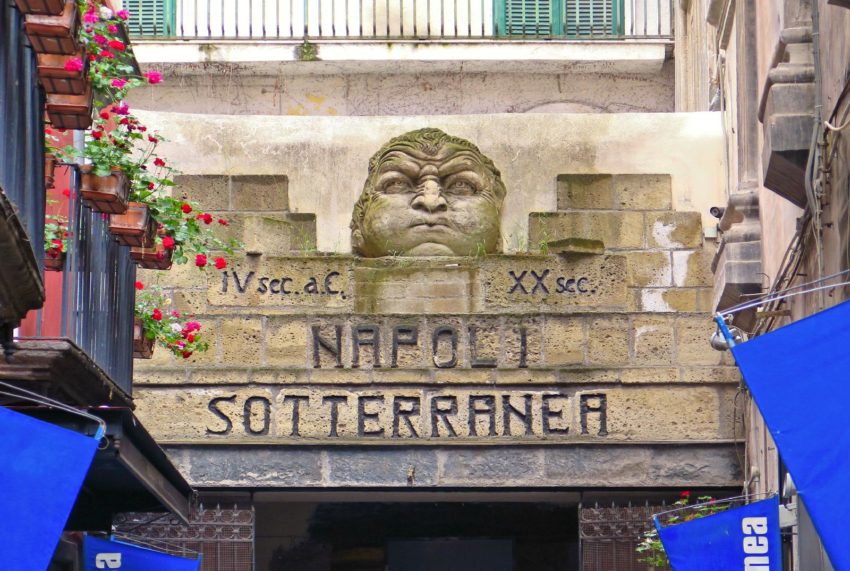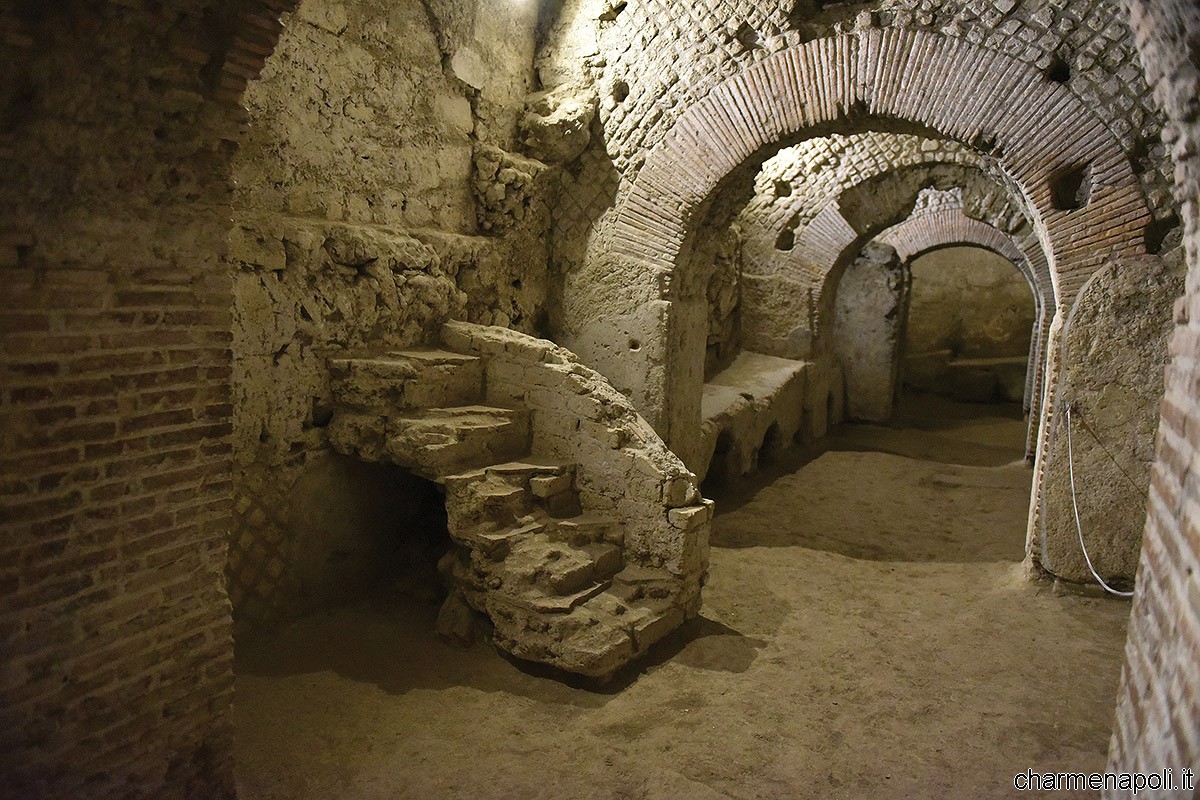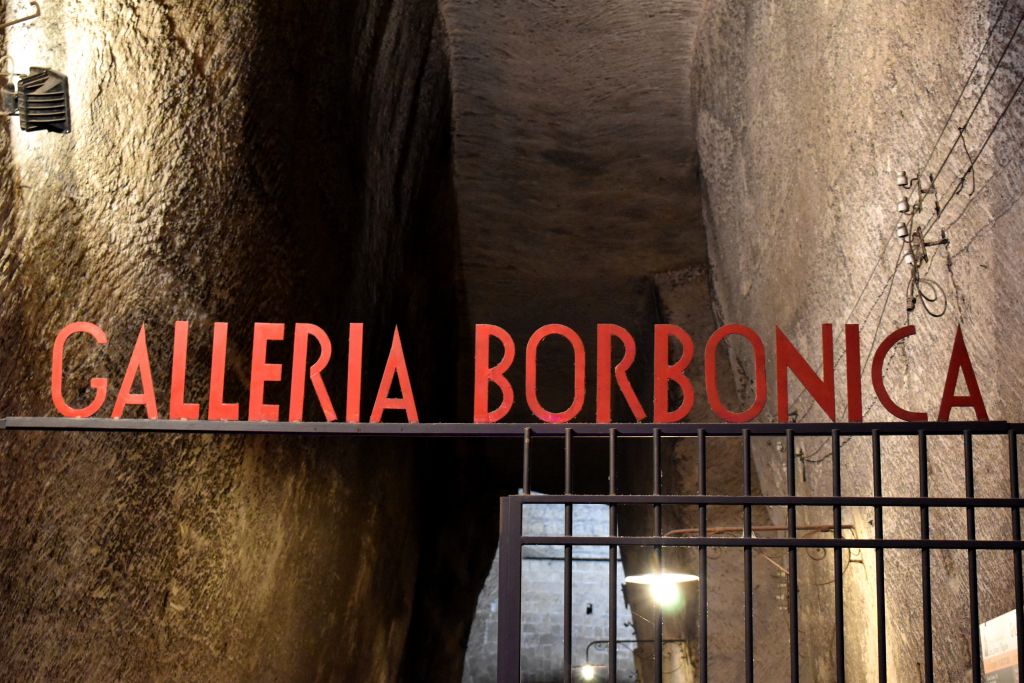The abandoned village
Mar 25, 2024
Il sito è temporaneamente in manutenzione e tutti i servizi offerti sono sospesi. Tutte le richieste e le prenotazioni non saranno accettate. Grazie per la comprensione.
The site is temporarily under maintenance and all services offered are suspended. All requests and bookings will not be accepted. Thank you for your understanding.
The Cisterns
One of the main entrances is located in Piazza San Gaetano, in the heart of the Historic Center of Naples, and is named "Napoli Sotterranea." Here the entrance leading to an underground world of ancient passages and cisterns. These cavities of Naples Underground were created by Greek colonists in the 4th century BC, as they began extracting the stone material needed to build the city above them, the ancient Neapolis. These cavities were later utilized as an aqueduct by the Greeks, who connected the cisterns through a network of tunnels drawing water from a spring at the foothills of Mount Somma, in the town of Volla. The Romans later expanded this system in the Augustan era, creating 400 km of underground tunnels and cisterns that distributed water to Pompeii, Herculaneum, and Stabiae in one branch, Naples, Casalnuovo, and Acerra in another, and reaching Bacoli to fill the Piscina Mirabilis cistern.
Book your tickets here: https://www.napolisotterranea.org/

The Roman market
The other entrance to the underground reality is located just in front of the cistern complex and is called the "San Lorenzo Maggiore Complex," where only 10 meters below the surface lies the ancient Macellum, the Roman market. Dating back to the second half of the 1st century AD, the Roman market consisted of a rectangular porticoed space with shops and an open, mosaic-paved courtyard in the center, where a tholos, a circular building for selling food, was placed. The lower levels of the excavation reveal the complex structure of the entire area. From the Greek era, there is evidence of a street, a stenopos, later defined as the cardo (axis) of Neapolis, unearthed beneath the transept of the church, covered by a pavement from the 5th century AD. The ancient road ran along the eastern side of a Roman building that, distributed over three wings, also served as an artificial support for the terrace above, where the market was located, defining the lower portion of the Forum. Rooms carved into the rock bear witness to daily habits, from bread ovens to laundries. It's like taking a journey through time, walking through living testimonies of the past.
Book your tickets here: https://www.laneapolissotterrata.it/

Bourbon Tunnel
In Domenico Morelli street, behind Piazza Plebiscito, hides the third entrance to the underground reality, the "Bourbon Tunnel." In 1853, Ferdinand II of Bourbon commissioned architect Errico Alvino to create a long underground tunnel connecting Piazza Plebiscito to Piazza della Vittoria, passing beneath the hill of Pizzofalcone. During public works, its true purpose was military: to serve as a rapid escape route (toward the sea) for the royal family in case of unrest and a quick connection to the palace for soldiers. The underground of Naples is also enriched with legends and mythology. It is said that the tunnel was used by the Bourbon nobility to escape prying eyes and enjoy secret meetings. The route was abandoned in the following century until, during World War II, some underground spaces were used and set up as air-raid shelters, equipped with beds, kitchen utensils, and even bathrooms. In the post-war period until the 1970s, it served as a municipal judicial deposit where various materials, including seized furniture, motorcycles, and cars, were stored.
Book here your tickets https://www.galleriaborbonica.com/

Conclusions
Naples Underground is much more than a collection of underground galleries. It is a journey through centuries, an immersion into the culture and history of one of the most fascinating cities in the world. From ancient Rome to World War II, every step beneath the surface of Naples reveals a new and captivating chapter of this historically rich city.